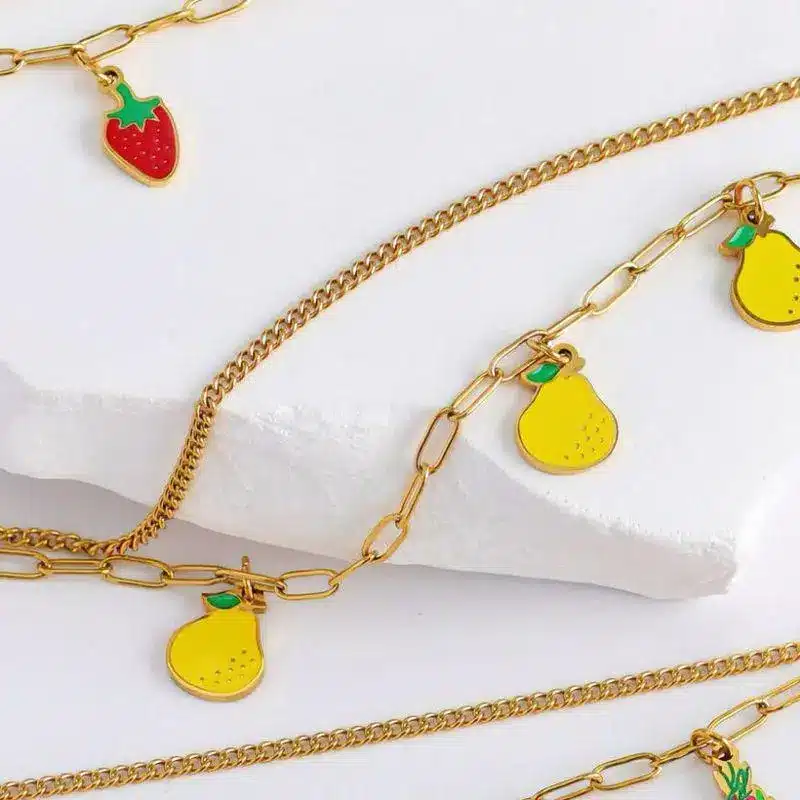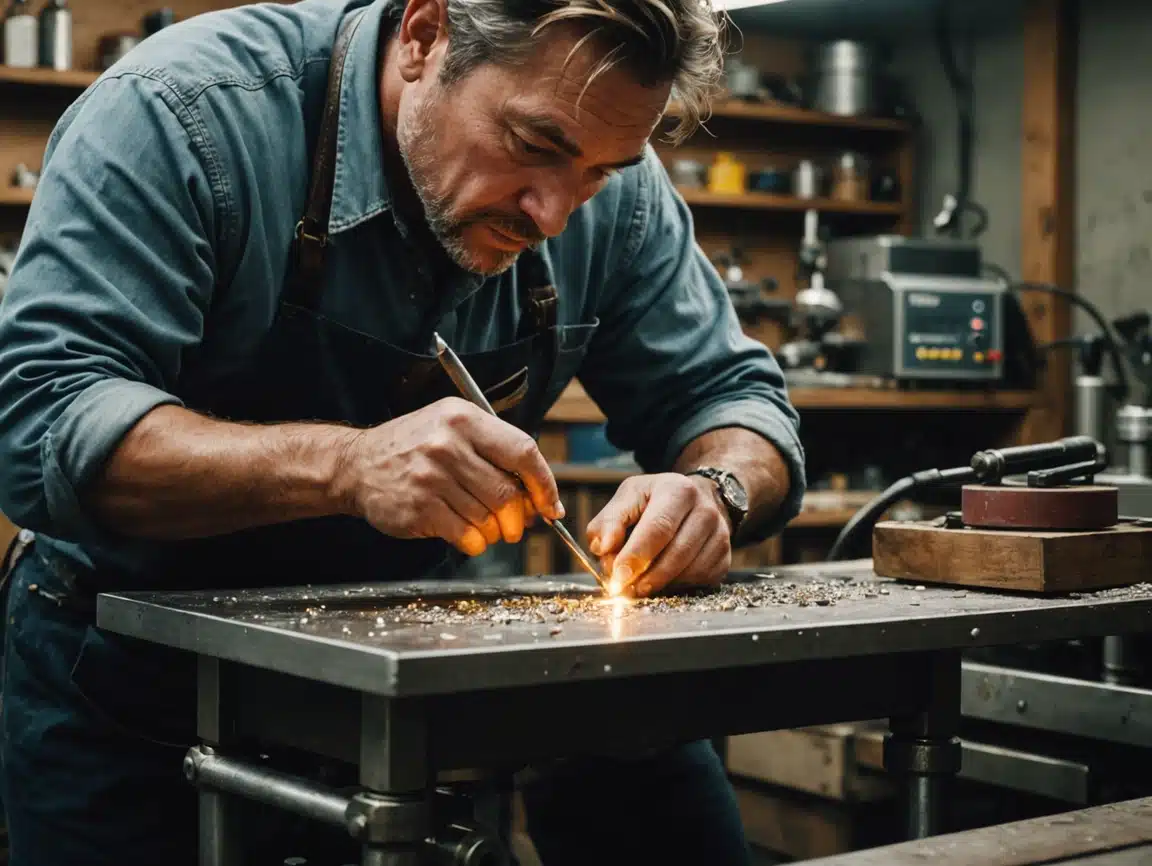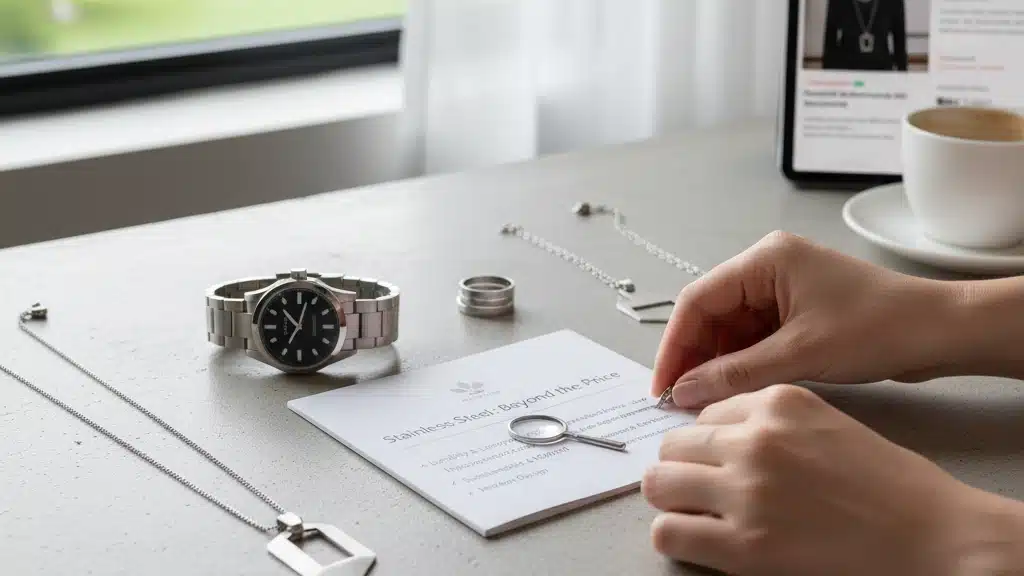Hypoallergenic Jewelry for Kids: The Ultimate Guide to Safety, Durability, and Ethical Sourcing

Key Takeaways
- Hypoallergenic jewelry for kids is important because kids with sensitive skin can develop rashes and allergic reactions from metals such as nickel.
- Safe materials – parents should seek out jewelry made from either medical-grade titanium, surgical stainless steel, niobium, high-purity precious metals or medical-grade plastic.
- Despite what ‘hypoallergenic’ might imply, not all hypoallergenic jewelry for kids is created equal and it’s key to look for certifications and material transparency.
- Careful design, fine finishes and durable construction add to the comfort and safety, minimizing potential injury or loss.
- Reading product descriptions and doing a patch test will arm parents with the information needed to make an educated decision and steer clear of allergic reactions.
- By supporting brands that employ conflict-free materials and responsible manufacturing, we encourage ethical practices and sustainability in the jewelry business.
Hypoallergenic jewelry for kids refers to jewelry that’s crafted using materials that minimize the risk of skin reactions. The majority utilize stainless steel, titanium, or medical-grade plastic, so they prevent itching and rashes.
Kids’ parents tend to select these for earrings, bracelets and necklaces to safeguard skin. Choosing the right kind of jewelry for sensitive kids can make all the difference when it comes to everyday wear.
The following sections highlight kids friendly and safe choices.
What is hypoallergenic jewelry?
Hypoallergenic jewelry is specifically designed to minimize the chance of skin reactions, making it an ideal choice for sensitive ears. Crafted from quality materials like medical grade titanium and grade plastic, these earrings are least likely to cause itching, redness, or swelling. This is particularly important for your little ones, as their skin is more sensitive, especially if they are trying earrings for the first time.
Good examples of safe earrings include gold-plated sterling silver and 14K or 18K solid gold. These options typically don’t contain nickel or lead, which are common allergens found in traditional jewelry. As consumers become more allergy aware, the demand for hypoallergenic jewelry continues to rise globally.
Parents are increasingly seeking out hypoallergenic products for their kids, ensuring they can wear beautiful pieces like flower earrings without fear of an allergic reaction. By choosing earrings made from safe metals and hypoallergenic materials, you can provide your child with stylish options that are not only fashionable but also gentle on their sensitive skin.
- Nickel
- Lead
- Copper
- Cobalt
- Brass alloys
The allergy culprit
Nickel is among the most common causes of jewelry allergies. It’s frequently alloyed into lower-cost metals to harden them, but even a trace amount could trigger a reaction. Certain children develop nickel allergy shortly after donning new earrings or bracelets.
Alloys of a blend of metals, like brass or copper mixed with nickel, can ignite more severe allergic reactions in susceptible children. Environmental elements, such as sweat or humidity, can exacerbate this, as moisture promotes metals to degrade and release more allergens.
Parents should keep an eye out for redness, swelling, itching, or small blisters—these are all symptoms of an allergic reaction.
The sensitive skin factor
Kids’ skin is way much thinner and softer than adult skin, so it responds more readily to irritants. That’s why opting for jewelry designed for sensitive skin is so important, particularly for young kids with eczema or other skin conditions.
Non-hypoallergenic metals can cause flare-ups exacerbating the situation for children who already suffer from sensitive skin conditions. Parents need to consider their children’s skin type prior to making any jewelry purchases.
If your kiddo’s got a history of allergies or sensitive skin, hypoallergenic jewelry in titanium, 18K gold or gold-plated sterling silver is a safer bet.
Beyond the label
Not all hypoallergenic jewelry is created equally. Certain brands slap on this label liberally, even if their items still contain nickel or other allergens. Certifications and meeting safety rules count a lot when it comes to trusting what your little one will sport.
Seek out brands that specify precisely what materials their jewelry is made of and adhere to transparent standards. Being transparent about what’s inside—such as surgical-grade titanium or solid gold—allows parents to make informed decisions for their children.
Safest materials for kids’ jewelry

To select safe materials for kids’ jewelry, it’s essential to prioritize options that are skin-friendly, play-resistant, and allergen-free. Many parents prefer using medical-grade plastic or high-quality metals for earrings because they help protect against rashes or irritation. Utilizing these hypoallergenic materials significantly reduces the chance of allergies, especially for children with sensitive ears.
Emphasizing safety means choosing pieces that endure, like playful designs that can be handed down or upcycled. Parents should understand the importance of selecting jewelry made from safe metals, such as medical-grade titanium, which almost never includes harmful substances. Sustainable options are vital, as these materials reduce waste and avoid strong chemicals in their production.
When shopping for your little one, consider jewelry that features sparkling crystals and durable earring posts. These options not only look beautiful but also ensure a comfortable experience for kids, allowing them to wear their favorite pieces without worry. Selecting the right jewelry can make all the difference in keeping their sensitive ears happy and healthy.
-
Medical-grade titanium
-
Surgical stainless steel
-
Niobium
-
Precious metals (gold, platinum, sterling silver)
-
Medical-grade plastic
1. Medical-grade titanium
Titanium is a great hypoallergenic option as it’s biocompatible, so the body won’t reject it. This metal is commonly used for surgical implants and wears well, even with metal-sensitive wearers.
It’s lightweight, so kids won’t feel encumbered by their jewelry. Titanium is incredibly strong, so pieces made from this metal stand up to everyday wear and play. Unlike certain metals, titanium won’t tarnish or rust or corrode even if wet or sweaty.
Parents will love titanium because you can get it in so many styles, from stud earrings to bracelets – practical and safe for many ages!
2. Surgical stainless steel
Surgical stainless steel is another hypoallergenic pick that’s prevalent in kids’ jewelry. It’s hard, rust-resistant, and stands up to rough wear, so it’s perfect for daily use.
For budget-conscious parents, this alloy is cost-effective versus precious metals yet safe for sensitive skin. Not only that, they have tons of different styles too–from classic hoops to adorable charms–so kids have options.
This material’s popularity comes from the fact that it’s easy to clean and low maintenance.
3. Niobium
Niobium isn’t as common as other metals, but it works well for kids with a need for hypoallergenic jewelry. The metal is fine and nickel and lead free, so it hardly ever causes a reaction.
Niobium resists tarnish, corrosion and oxidation – it looks good and lasts. Niobium earrings and necklaces fit perfectly with kids who want colorful, safe jewelry.
4. Precious metals
Gold, platinum and sterling silver are naturally hypoallergenic. High purity counts—14K or 18K gold and platinum have minimal allergic potential.
These metals appear timeless and are frequently selected for memorable events. For starters, parents should opt for solid gold or platinum — not plated — jewelry, which is much safer.
Plated options can wear down and expose allergenic metals.
5. Medical-grade plastic
Medical-grade plastic is a secure choice for younger kids. It’s light and flexible, won’t break when bent, making it great for everyday wear.
Children pick from numerous colors and forms, so jewelry will go well with their look. This plastic doesn’t absorb moisture or sweat, so it remains clean and endures long playtimes.
Beyond the material
Material alone doesn’t ensure that jewelry, like flower earrings, is safe or functional for children. The design, finish, and construction all contribute to comfort and safety, especially for little ones with sensitive ears, requiring parents to look beyond just the sparkling appearance.
The design
|
Feature |
Why It Matters |
Examples |
|---|---|---|
|
Rounded edges |
Reduces scratches and pokes |
Smooth hoop earrings, soft pendants |
|
No small loose parts |
Lowers risk of choking |
Hinged bracelets, solid charms |
|
Lightweight feel |
Less strain on small ears or wrists |
Thin studs, silicone bands |
|
Adjustable sizing |
Grows with child, better fit |
Stretch bracelets, chain extenders |
|
Playful elements |
Appeals to kids’ interests |
Animal shapes, birthstones |
Steer clear of pointy edges and bits that can break off – these are toddler safety nightmares. Tiny beads or loose charms can be choking hazards, particularly around toddlers. Opt for pieces with smooth lines and closed designs so nothing comes loose or pokes.
Innovative layouts are beyond color and figure. They allow kids to voice their preferences and add significance to each one. Animal or star charms, or birthstone embellishments, are a few choices that allow kids express individuality.
Personalizable items—such as bracelets that allow children to attach or exchange charms—are trending as they provide room for individual preferences and self expression.
The finish
Finishes impact the sensation of the jewelry and the skin. A quality finish not only smoothes the surface, but leaves a barrier between skin and metal — significant even when it’s hypoallergenic. Non-toxic coatings are crucial for kids because their skin is delicate and more apt to become irritated.
Seek out nickel-free jewelry or that which is coated with medical-grade resin. Polished finishes prevent the jewelry from irritating or snagging on delicate skin. This comes in pretty handy for earrings, since the back of your ear can get raw if they have a coarse finish.
Parents inquire as to what finish is used—some brands use polish, others a protective lacquer. Both can assist, however, not all are hypoallergenic—so worth verifying. Ensuring the finish is non-toxic can translate to less red marks, less itching, and more comfort.
The construction
Sturdy stuff counts because kids climb, scrape and sometimes don’t remember what they have on. Jewelry that can take on busy days – at school or the playground. Clasps should be sturdy and not open accidentally.
Screw back earrings are best for toddlers and new piercings, as they won’t fall off or get lost. Quality checks during manufacturing catch sharp points, loose pieces or weak clasps before jewelry gets to stores.
Brands with a reputation for real craftsmanship are a safer bet, their stuff tends to go the distance and not snap or inflict injury. Parents should seek out brands that detail how their jewelry is constructed and back their safety practices.
The bigger picture
Security, convenience, and quality are as important as appearance when selecting jewelry for kids. Choosing hypoallergenic materials ensures that the earrings are safe for sensitive ears, allowing your little one to wear them comfortably.
How to choose the right piece

Selecting hypoallergenic jewelry for kids, such as flower earrings made from medical grade plastic or medical grade titanium, is about more than just loving the look. Parents need to be smart about product information and materials to ensure their little ones can wear their jewelry comfortably every day. If you choose the right hypoallergenic materials, you can avoid skin issues and enjoy many compliments.
Read the details
Always look for the hypoallergenic and transparent material declaration on the label! Seek out trusted materials such as surgical-grade stainless steel, titanium, 14K or 18K gold, sterling silver or platinum—these have less of a likelihood of causing allergies. Nickel is a common culprit of allergies, so make sure the piece is nickel-free.
Premium enamel jewelry is another choice, but ensure it’s created to credible safety specifications. Certifications help to assure the jewelry is safe. Look for indicators that the piece complies with international safety standards, such as a CE mark or equivalent. These can provide additional assurance that the jewelry is suitable for children.
Read all of the description for allergens, and don’t be afraid to google brands or request evidence. If claims seem general or unsubstantiated, seek out an alternative with clearer details.
Consider the child
Get your child involved in selecting jewelry—this makes a world of difference in them actually wanting to wear it. Consider their age, activity level and style. For the younger children or those on the move, small stud earrings or simple bracelets in durable, hypoallergenic metals make sense.
Comfort counts as well. Some kids are really sensitive to certain metals or designs. A sporty or active child will likely want lightweight, smooth jewelry that won’t snag or poke. See if your kid has demonstrated an intolerance to jewelry in the past, particularly around nickel or mixed-metal wares.
Perform a patch test
Patch test is an easy, convenient action. Test the jewelry on a small patch of your child’s skin—behind the ear or on the inside of the wrist—for approximately 24 hours. Observe for any redness, swelling or itching. If any of these signs pop up, remove the jewelry and steer clear of that substance.
This step is especially crucial for kids with a history of skin allergies or allergies and can save bigger issues down the road.
Maintain and monitor
Clean jewelry frequently, particularly if your child wears it each day. Use gentle soap and water, skip cleaners that can leave behind residue. Inspect for wear, rough edges or broken pieces, as these can irritate skin or injure.
Swap out pieces if they break.
The ethics behind the sparkle

The ethics behind the sparkle of kids’ hypoallergenic jewelry, including playful designs like flower earrings, can nudge the industry towards more fair and eco-friendly practices, benefiting children with sensitive ears and metal allergies.
|
Ethical Consideration |
Significance |
|---|---|
|
Conflict-free sourcing |
Prevents human rights abuses and supports safe work |
|
Responsible manufacturing |
Reduces pollution, waste, and exploitation |
|
Transparency |
Builds consumer trust and accountability |
|
Sustainability |
Protects the environment and resources |
|
Fair labor practices |
Ensures safe, equitable work for all involved |
|
Product safety |
Keeps jewelry safe, especially important for children |
Conflict-free materials
Conflict-free means the gems and metals used don’t fuel violence or harm workers. These materials are ethically mined and refined, eschewing the human rights abuses that have plagued certain mining areas. Selecting brands emphasizing responsible sourcing makes a difference—such choices help move the market toward higher standards.
Many consumers today seek out conflict-free certifications, like those of the Responsible Jewellery Council. They highlight the brand’s ethics. Parents can seek out these labels or inquire into sourcing.
Researching brands before buying counts. A number of brands now use recycled metals or blockchain tools to trace gems from mine to market, providing an extra trust layer.
Responsible manufacturing
Ethical production reduces damage to the world and its inhabitants. The jewelry sector has a long history of problems from mining, such as deforestation and water pollution, to hazardous working conditions. Some brands tackle these issues with recycled metals, conflict-free stones, and green packaging.
This work diminishes the industry’s mark. Transparency allows buyers to have faith in what they’re purchasing. Brands who share their process—where and how their jewelry is made—help people make informed decisions.
This is particularly true for kids’ jewelry, where safety and durability are essential. Fair labor is a piece of ethical production. Brands that pay workers a decent wage and work to keep them safe elevate the bar.
Things like Fairtrade Gold certifications can help buyers discover these brands.
The role of consumer choices
Consumers still have the ability to change it. By choosing brands that support ethical practices, consumers contribute to an increase in demand for improved sourcing and manufacturing. This insistence has already resulted in more brands funding supply chain traceability and conditions upgrades.
Parents can verify certifications, inquire about sourcing, and learn about a brand’s methods. Plus, when you support ethical brands, you’re clearly telling the industry where to go.
Even tiny decisions accumulate. Opting for recycled metals or conflict-free stones, or supporting a brand willing to demonstrate a transparent supply chain advances the entire marketplace.
Impact on sustainability
For example, the types of metals and stones that are used in jewelry can alter its effect on the world. Recycled metals and conflict-free gems safeguard natural resources and minimize damage. Safe, strong pieces are crucial for kids as well—they need jewelry that holds up, that doesn’t break easily.
Sustainable packaging, such as recycled paper or minimal, reusable boxes, is another option brands can explore. Certifications and transparency keep brands honest and keep parents making choices that fit their values.
Care and maintenance guide

Hypoallergenic jewelry for kids, including flower earrings and playful designs, requires the appropriate maintenance to remain safe, hygienic, and stylish. Parents can assist in keeping these products in tip-top shape with a few simple routines and educating kids on easy habits to avoid allergic reactions.
- Wash jewelry regularly in mild soap and water, wiping it with a soft cloth to prevent scratching softer stones. Avoid strong cleaners.
- Check earring screw backs or closures every few days to make sure they’re tight.
- Refrain from applying lotion, perfume or SPF near pieces of jewelry, particularly around earrings.
- Keep pieces in a clean, dry jewelry box or pouch, away from sunlight and moisture.
- Take out earrings from healed piercings once a week and clean with mild soap and water.
- Keep in mind that sterling silver 925 can tarnish and is still hypoallergenic.
- Opt for secure substances like surgical titanium, gold-plated 925 silver or solid gold for prone skin.
- Routine inspections and bathing can avoid issues with bacterial irritation or infection — particularly as the seasons transition.
Proper cleaning
The easiest way to clean hypoallergenic jewelry is with warm water and mild soap. Employ a soft cloth or gentle brush to remove dirt and oils without scratching surfaces, such as gold, titanium or silver. Avoid any scouring pads or rough sponges that can scratch the jewelry.
Harsh chemicals, cleaning sprays, or alcohol-based products can break down the finish or even change safe metals in time. Stick to basics: a drop of mild soap mixed in a cup of water, then rinse and dry with a soft towel.
For earrings, cleaning once a week works great for most kids. If worn daily, a quick wipe down after every wearing might suffice.
Safe storage
Putting your jewelry away properly avoids tangles, scratches, and missing pieces. A little jewelry box with padded slots or a soft pouch works great for kids’ earrings or bracelets. Storing each piece in its own compartment prevents chains from tangling and earrings from misplacing their backs.
If the kids share a room or you travel a lot, a small organizer can keep everything together. Remind kids to put it away once they’ve removed it. Ensure storage locations are dry and out of direct sunlight, which can discolor or compromise certain materials.
Moisture is not a friend to metals (even if they’re hypoallergenic). Stashing pieces in humid bathrooms or by windows will just accelerate tarnish, particularly for silver.
Teaching kids about care
By educating your kids about how to care for their jewelry, you can instill solid habits at a young age. Demonstrate how to wipe earrings with a soft cloth post-wear, show them how to inspect clasps or earring backs prior to donning pieces.
Detail why it’s advisable not to wear jewelry when swimming or sleeping. Have them help choose their storage box or pouch so they’re more likely to use it.
Regular checks
Simple inspections every few days keep jewelry secure and comfortable. Check for loose backs or stones. If anything is rough or looks dull, it’s time for a gentle clean.
Cleaning as soon as you can after sweat or dust exposure prevents accumulation and skin woes.
Conclusion
To choose child-friendly jewelry, opt for hypoallergenic metals like titanium or stainless steel. These metals tend to be a blessing for kids with skin that tends to get red or itchy. Choose rounded forms and avoid pointed corners. Look for tiny pieces—children are going to put it in their mouths! Wipe each piece regularly with mild soap and water. Seek out brands that back fair work and transparent labeling. A quality jewelry brings the fun but keeps safety #1. With any new jewelry, monitor your child for the initial few days to spot any indication of rash or pain. Need additional tips or assistance choosing? Contact anytime. Your inquiries assist us to make stuff excellent for everybody.
Frequently Asked Questions
What does hypoallergenic jewelry mean?
Hypoallergenic jewelry, made from medical grade titanium and other safe metals, is crafted for kids, especially those with sensitive ears, ensuring a lower risk of allergies.
Which jewelry materials are safest for kids with allergies?
Titanium, surgical stainless steel, and medical grade titanium are safe bets for earrings. These materials hardly ever cause allergic reactions, making them highly recommended by professionals.
Can kids develop allergies to jewelry over time?
Yup, kids can be allergic to metals such as nickel, so selecting hypoallergenic earrings made from medical grade plastic or titanium from the beginning avoids this.
How do I know if my child is allergic to jewelry?
Watch for signs like redness, itching, or swelling where the earrings contact sensitive ears; these symptoms can appear within hours.
Is hypoallergenic jewelry more expensive?
Not necessarily. Although certain hypoallergenic materials, like medical grade plastic and medical grade titanium, will be pricier, there are many inexpensive options. Having quality earrings helps you avoid irritation and skin problems.
How should hypoallergenic jewelry for kids be cleaned?
Use gentle soap and warm water to clean your earrings, especially if they are made from medical grade plastic or hypoallergenic materials. Avoid chemicals and ensure to dry completely to maintain the protection and longevity of the jewelry.
Do ethical standards matter when buying kids’ jewelry?
Indeed, ethical jewelry means using safe materials like medical grade titanium and medical grade plastic, ensuring fair labor while helping the planet be sustainable.
Related Posts

Understanding Wholesale Jewelry Pricing and How It Works
Understanding Wholesale Jewelry Pricing and How It Works When people see a ring that costs $6 wholesale and retails for $59, they often

The Art of Shine in Jewelry Polishing and Plating Techniques
Discover how polishing and plating transform modern jewelry with expert techniques for lasting shine and elegant finishes.

Τι Νοιάζει Πραγματικά τους Αγοραστές Ανοξείδωτου Κοσμήματος Εκτός από την Τιμή
Τι πραγματικά νοιάζει τους αγοραστές ατσάλινων κοσμημάτων πέρα από την τιμή ανθεκτικότητα υποαλλεργικά υλικά και μοντέρνο στυλ.
